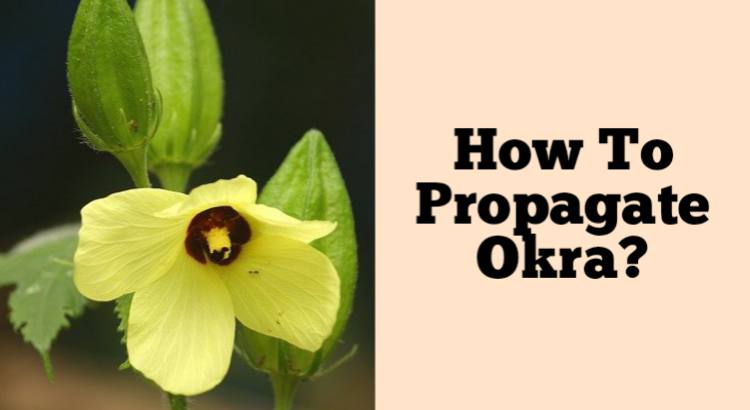Okra is a vegetable that you can easily grow from seed. It is cultivated in most tropical countries around the world. Okra grows mainly as a perennial plant, meaning it will produce fruit for many years without having to replant it but it is usually grown as an annual in temperate countries.
The plant can grow up to 6 feet tall and produces an edible fruit pod with seeds inside. Okra plants require very little maintenance once they are established and can be grown both indoors or outdoors depending on your climate zone.
It is easy to propagate Okra plants from seeds either indoors or outdoors.
Okra seeds can be planted indoors in pots or outdoors directly into the ground.
Okra seeds should be planted in potting soil, watered well, then placed in a warm location until they have germinated (2-7 days). Ideal temperatures for germination are between 70 and 75 degrees F.
Once the seeds have germinated, they can be planted outdoors. If you are planting them indoors, it is best to wait until all danger of frost has passed and night temperatures remain above 50 degrees F.
Okra seeds will germinate in 2-7 days. The ideal temperature for germinating the seeds is 70 – 75 degrees F.
Okra seeds should be planted in well-drained soil, moist and rich in organic matter.
After the seedlings appear, thin them so that there are 4 inches between plants when they are 5 to 6 inches tall.
The plants need full sun and good drainage. They should be fertilized regularly with an organic fertilizer such as compost tea or manure.
The plants are hardy in USDA zones 4 through 8. They should be mulched in winter to help insulate the roots and keep moisture in the soil.
The seedlings should be transplanted to their individual pots when they have outgrown their container. The soil depth should be 7 – 12 inches deep.
Use a good quality potting mix that is light and well-drained, with an adequate amount of organic matter such as peat moss, coco peat, or vermiculite.
You can plant okra in spring after the last frost date has passed or in summer after all danger of frost has passed.
Okra can be planted in garden beds or containers. Soil should be well-drained and slightly acidic, pH 5.5 to 6.8 is ideal.
Okra can be planted directly in the garden or in pots. Seeds should be planted 1/2-1 inch deep, about 6 inches apart in rows that are 24 inches apart.
To successfully propagate okra, you’ll need to plant your seedlings in well-drained soil that is moist yet not wet. The soil should be rich in organic matter and relatively loose and friable.
Okra seeds are quite small and will germinate best if they remain moist for at least the first week or two after planting. This means you should water them regularly until they start to grow their first leaves, which are called cotyledons or seed leaves.
After the first set of cotyledons appears, you can start to wean the seedlings off their constant watering. Once the plants have established their root system and are growing well, you can reduce your watering frequency to once every couple of days.
Conclusion
These are the basic tips to propagate Okra plants. It is essential that you know the right time to sow the seeds, and how much sunlight they require. So make sure that you follow these steps properly and get the best results from your garden.

